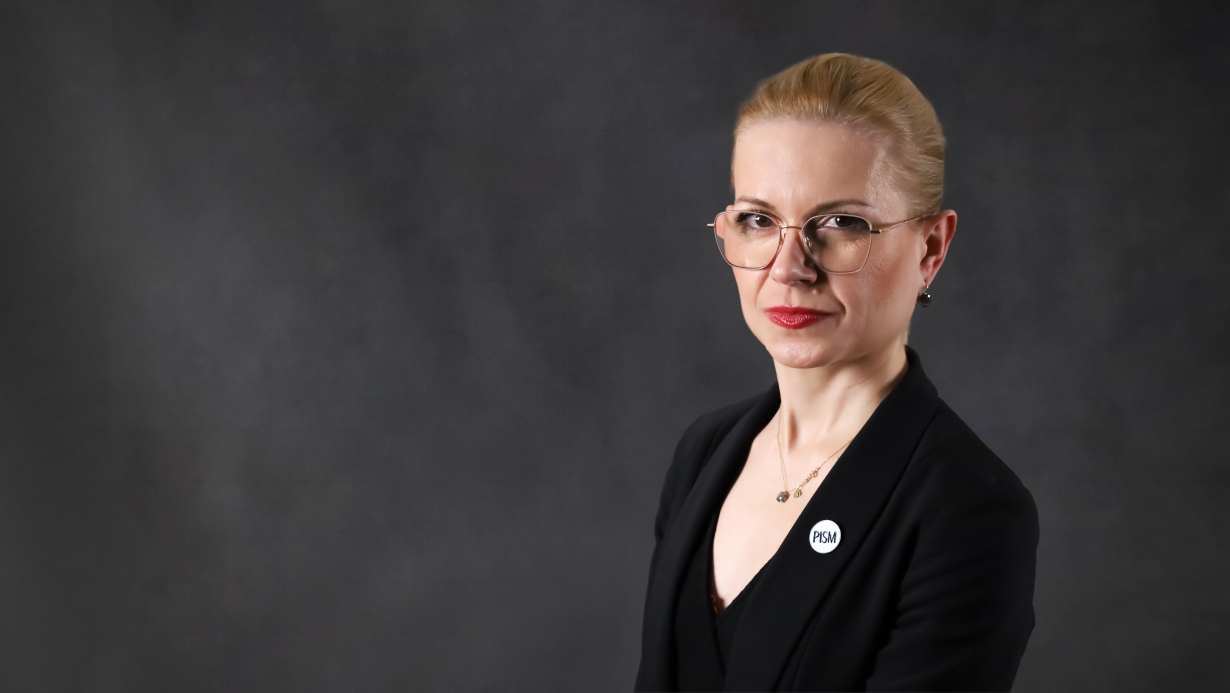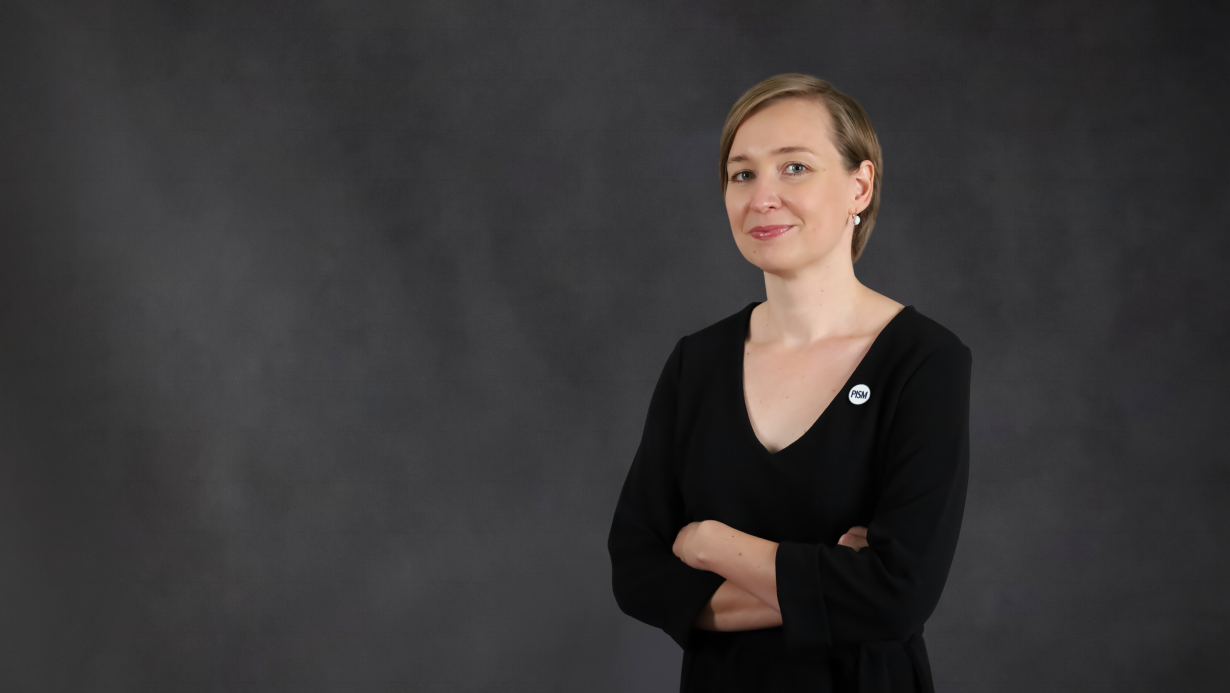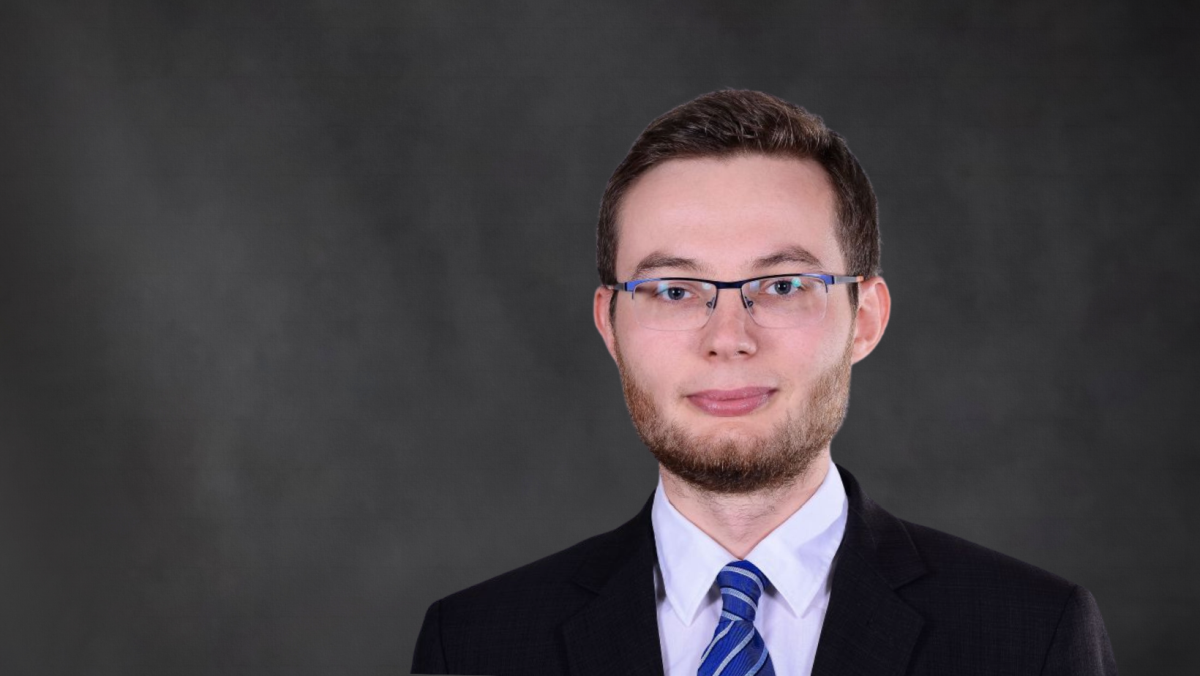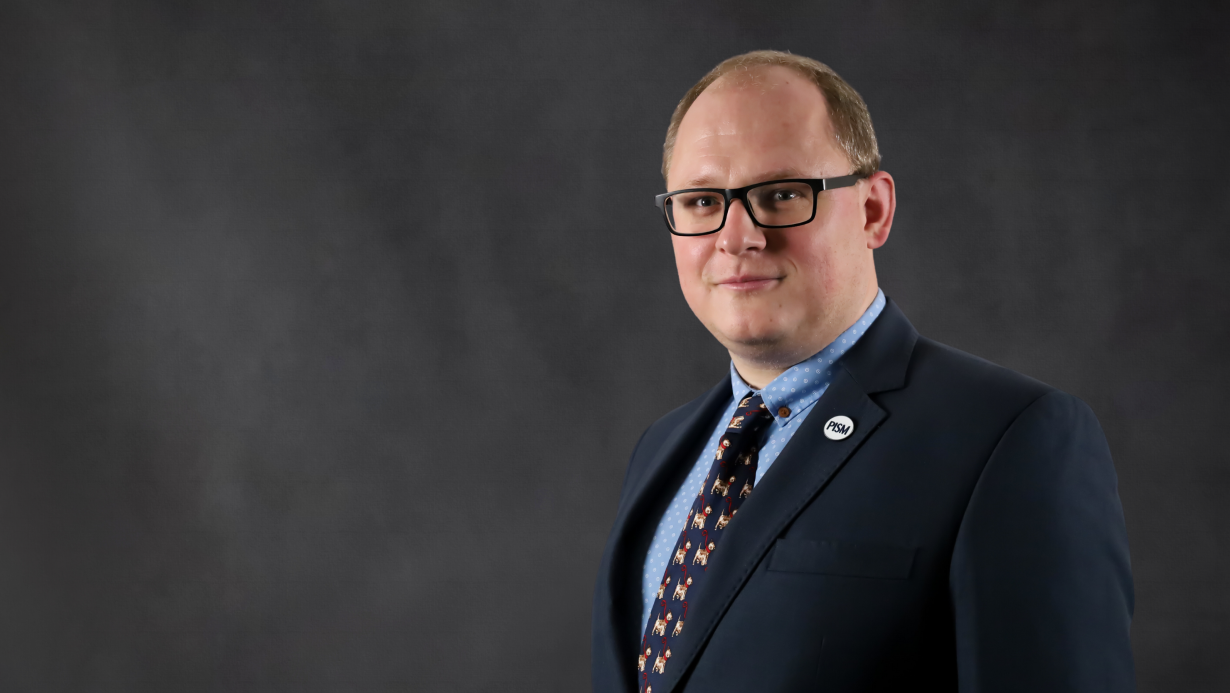Promotion of the Three Seas Initiative in the Member States and Among Observer States
The countries of the Three Seas Initiative (TSI) recognise it as a permanent platform for regional cooperation. Their authorities’ promotion of it in most cases has increased, although the visibility of the initiative may have decreased since the change of president in Croatia, which with Poland is a co-creator of the TSI. The promotion of the initiative has so far been independent of the political orientation of the members’ presidents and governments but have differed both in intensity and in preferred areas of cooperation. At the same time, the promotional activities have translated into only the minimum financial commitment from most of the member countries, which does not ensure a sufficient base to sustain the initiative or implement joint projects.
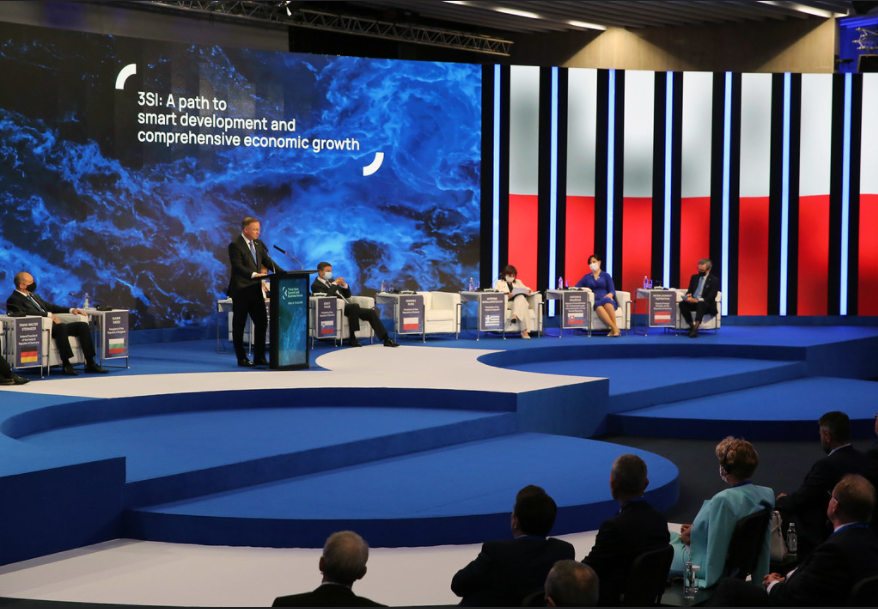 Photo: 3seas.eu/flickr.com
Photo: 3seas.eu/flickr.com
The Three Seas Initiative is a presidential platform for regional cooperation, established in 2016 by representatives of 12 Member States of the European Union: Austria, Bulgaria, Croatia, Czechia, Estonia, Hungary, Latvia, Lithuania, Poland, Romania, Slovakia, and Slovenia. According to the Dubrovnik Statement issued at the founding meeting, the TSI serves to deepen European integration and accelerate its harmonisation across the EU, mainly through the development of transport infrastructure, the digital economy, and strengthening energy security in Central Europe.
Annual leaders summits point the way for the development of TSI. After Dubrovnik in 2016, the next one was held in 2017 in Warsaw with the participation of U.S. President Donald Trump. In 2018, at the Bucharest summit, representatives of the European Commission (EC) and Germany attended for the first time a TSI meeting, where they also expressed their support for the initiative. Besides, it was decided to establish the Three Seas Initiative Investment Fund (TSIIF), inaugurated in 2019 at the Ljubljana summit. The next meetings were held in 2020 in Tallinn (virtually) and in 2021 in Sofia. The seventh summit in 2022 will be hosted in Riga. Observer status in TSI is held by Germany, the U.S., the EC, the European Investment Bank, the European Bank for Reconstruction and Development, and the World Bank.
The TSIIF serves to obtain financial support for projects involving at least three TSI members. Financing is intended to come from state and international capital institutions, which are to contribute to the target amount of €5 billion. Nine of the 12 TSI countries belong to the fund, except for Austria, Czechia, and Slovakia. Poland has contributed €750 million, Slovenia €23 million, and the rest of the members €20 million each, which is the minimum contribution. Meanwhile, the total projected costs of the priority projects (currently there are 90) is about €181 billion. The International Monetary Fund (IMF) estimates the investment needs in the TSI area are at least €1.15 trillion.[1] TSI projects therefore still depend on EU funding, and many of the proposed projects overlap EU investments. Therefore, the development of TSI will largely depend on the involvement of its members in the initiative’s promotion and providing the necessary financing.
Croatia as Co-Creator of the TSI
Kolinda Grabar-Kitarović, the president of Croatia in 2015-2020, joined with Polish President Andrzej Duda to establish the Three Seas Initiative. The TSI flowed from the Croatian ABC (Adriatic-Baltic-Black Sea) concept of cooperation of the 12 countries. Representatives of these countries (except Latvia) met on an invitation from President Grabar-Kitarović and the American think tank the Atlantic Council in New York in 2015 on the occasion of the UN General Assembly.[2] Grabar-Kitarović was also the host of the first TSI summit in 2016. Through such involvement, she was, apart from the Polish authorities, the main promoter of the initiative, which she advertised as “the driving force of Europe”.[3]
The Croatian involvement in the TSI weakened significantly after Social Democrat Zoran Milanović took over the presidency in 2020. This is because he considers the initiative both unnecessary and potentially harmful to Croatia. As a consequence, the TSI portfolio was taken over by the Croatian government of Andrej Plenković, whose party, the conservative Croatian Democratic Union, was also where Grabar-Kitarović originated. Plenković, who as prime minister since 2016 had shown virtually no interest in the initiative, now participates in its summits after the change of president. However, Grabar-Kitarović continues to promote TSI as an honorary member of the Atlantic Council, for example, by participating in a meeting of representatives of this think tank in 2021 with the presidents of Poland and Latvia, as well as with American business leaders.
In 2020, just before the Sofia summit, Croatia nominated its minister of foreign and European affairs as coordinator for the TSI. The government views the initiative through the prism of the potential for economic growth and infrastructure development. It especially promotes the importance for Central Europe of the LNG terminal on the Croatian island of Krk, in operation since 2021. The Croatian Bank for Reconstruction and Development joined the TSIIF and pledged €20 million. However, this has not translated into widespread promotion of the initiative by Croatian businesses. As well, Croatian expert opinions on TSI have appeared more often in niche forums than in the output of leading research centres.
Visegrad Partners
The main promoter of the TSI in Czechia is President Miloš Zeman. In 2019, he participated in the summit in Ljubljana at the urging of Croatian President Grabar-Kitarović, and in the virtual meeting in Tallinn. Zeman has used his participation to promote the construction of the Odra-Danube-Elbe canal, which is also the only one of the 90 TSI investments in which Czechia participates. However, this limited involvement is further evidenced by the lack of participation in the TSIIF, despite an announcement by Deputy Minister of Transport and government plenipotentiary for the TSI Jan Sechter that Czechia will join the fund. This was reflected in a lack of vision by the government of Andrej Babiš as to Czechia’s participation in the TSI.
The tripartite political coalition Together announced its involvement in TSI, which it sees as “a geopolitical platform for strengthening cooperation between the USA and Central and Eastern Europe”.[4] In Czechia, TSI cooperation was included for the first time in the government’s coalition agreement in 2021[5] and until recently, the initiative was associated mainly with President Zeman’s regional policy. Expert perspectives on TSI are presented, among others, by the Czech think tank the Association for International Affairs (AMO)[6] and by the educational and cultural institute Václav Havel Library.
Slovakia’s involvement in the TSI remains insignificant, and the willingness to promote it at the presidential level is declining. Former President Andrej Kiska attended the summits in 2017 and 2018, while current the current president, Zuzana Čaputova, participated in only the virtual TSI meeting in 2020.
Slovakia has not joined the TSIIF, like the other countries of the Slavkov Triangle (Austria and Czechia). Slovak interest in TSI projects focuses on infrastructure connections, in particular gas (Eastring), road (D3 motorway, on the Slovak-Polish-Czech border), and rail (modernisation of connections with Czechia). Although the Via Carpatia runs through the country, the expansion of this road is not being implemented from the TSI investment list and the progress on it has been slow. The TSI has been promoted by, for example, the Globsec think tank through participation in the TSI Business Forum in 2018.[7]
Hungary treats the TSI as a non-essential regional cooperation format, and one that is potentially complementary to lasting forms of financing infrastructure projects and maintaining transatlantic relations. The country’s scepticism of the initiative—evidenced by, for example, President János Áder’s absence from the Bucharest and Ljubljana summits—was replaced by Hungary’s moderate engagement following the U.S. announcement in 2020 of a $1 billion contribution to the TSIIF for energy projects. The next summit was attended remotely both by the president, who fulfils purely representational duties, and the foreign minister, Péter Szijjártó. The meeting in Sofia this year was attended only by the president, who criticised the operation of the TSIIF there. He emphasised a desire for greater transparency in project financing decisions and for maintaining a geographical balance when selecting them[8] (so far no project submitted by Hungary has qualified for funding from the TSIIF, which is why there is no noticeable interest among Hungarian businesses in the TSI in general).
Péter Sztáray, secretary of state for security policy in the Hungarian Ministry of Foreign Affairs is the official most involved in TSI-related matters. Both he and Szijjártó emphasise the practical dimension of the initiative. They state that it only makes sense in case of the actual implementation of specific projects. Hungary contributed €20 million to the TSIIF in 2020. The country is also in favour of establishing a TSI secretariat and is ready to provide it with headquarters in Budapest. Research and expertise focusing on the initiative is marginal and includes a few analyses and events hosted by the governmental Institute for Foreign Affairs and Trade and the Antall József Knowledge Centre, granted public financing until 2021.
Northern Partners
In Lithuania, President Gitanas Nausėda participated in the summits in Tallinn (virtually) and in Sofia and is the main official involved in the promotion of the Three Seas Initiative. Lithuania sees the need to include issues related to the security of the region in the TSI cooperation[9] and underlines the importance of infrastructure projects for strengthening NATO’s Eastern Flank by increasing the interoperability of the allied troops. Moreover, Lithuania’s involvement in the initiative brings benefits to the bilateral cooperation with Poland.
The idea of TSI is also supported by the centre-right government of Ingrida Šimonytė. She sees the initiative as an important element of U.S. policy and as an economic and infrastructural project. These include, for instance, the Via Baltica and Rail Baltica, energy infrastructure, including the GIPL gas pipeline, and the synchronisation of the Baltic States with the system of European electricity networks (Continental Europe Synchronous Area, CESA).
Latvia’s stance on TSI had been one of scepticism, but with the growing involvement of the remaining Baltic States, it has turned more positive. At the summits in Tallinn (virtually) and Sofia, Latvia was represented by President Egils Levits, while Foreign Minister Edgars Rinkēvičs is the national coordinator for the initiative.
The increased interest in TSI in Latvia is related to the planned summit in Riga in 2022. Levits announced that the summit will be used to promote the involvement of private capital in the modernisation and expansion of transport, energy, and digital infrastructure within the framework of the TSI. Latvia also will focus on supporting economic growth. Therefore, before the summit, it is promoting the initiative as a tool to increase the cohesion of the entire EU and transatlantic cooperation. The importance for Latvia of TSI in the latter case was demonstrated by a conversation between Minister Rinkēvičs and Wendy Sherman, U.S. deputy secretary of state. In 2020, Latvia joined the TSIIF with the minimum contribution and is promoting such projects as the Salaspils Rail Baltica logistics centre, the LNG terminal in Skulte, and a wind farm near Jelgava. The state investment agency ALTUM promotes the initiative to the public, and in view of the upcoming Riga summit, the initiative is likely to be the subject of expert commentary, mainly in media.
Of the Baltic States, Estonia has made the biggest shift in its approach to the TSI as it had been one of its main sceptics, afraid as it was of TSI competing with the EU. This changed with the prospect of organising the 2020 summit. It also prompted Estonia to join the TSIIF, albeit also with the minimum contribution.
Estonia was represented at the summits by President Kersti Kaljulaid, an active supporter of the initiative over time. In the TSI region she saw an opportunity to promote Estonia as a modern country, supporting the development of digitalisation and innovation. This element of TSI cooperation, now also supported by the central cabinet of Kaja Kallas, was included in the Smart Connectivity concept, which also was the motto of the Tallinn summit. Smart connections are supposed to help the region not only meet its needs in transport, energy security, digitalisation, and other sectors but also to create intelligent solutions in these areas. In turn, President Alar Karis, who has been in office since October 2021, emphasises that the initiative contributes to the promotion of the region’s economic interests.[10]
To increase support for TSI as a link between northern and southern European states, Estonia invited Finland to the Tallinn summit with the possibility of including it in the initiative as an observer (which ultimately did not happen). Moreover, Estonia has also advocated the Polish idea to develop TSI cooperation with Ukraine. The Tallinn summit resulted in greater interest from expert circles, including from the International Centre for Defence and Security (ICDS).[11]
Southern Partners
Borut Pahor, the Social Democratic president of Slovenia, has attended all TSI summits, but his country’s commitment to promoting the initiative was initially moderate. This changed in 2019 when Ljubljana hosted the summit. In addition to the organisation of the 2nd Three Seas Business Forum, Slovenia promoted TSI cooperation, including through a mobile app for “business-to-business” contacts, available on the summit website (three.si), the only portal dedicated to a single TSI summit, which also includes evaluations of projects. Slovenia joined the then-inaugurated TSIIF with contribution of €23 million.
The Slovenian president promotes TSI primarily as an opportunity to deepen integration and cooperation in the region in order to overcome development differences in the EU. He also sees it as a platform for strengthening security, democracy, and respect for human rights. The country underlines the importance of the U.S. interest in the initiative as an opportunity to strengthen transatlantic ties and business relations, including mutual investments in infrastructure. This last aspect of the initiative is what motivates support from national-conservative Prime Minister Janez Janša, who has been in office since 2020. He supports Slovenia’s involvement in TSI and also sees a role for developing infrastructure in Central Europe in the Central Five (C5), co-created in 2020 at the governmental level with Austria, Czechia, Slovakia, and Hungary.
The authorities of Romania initially treated the initiative with reserve, for example, at the Dubrovnik summit it was represented only by the minister of transport. The announcement of Trump’s participation at the Warsaw summit prompted centre-right President Klaus Iohannis to attend and to organise the next meeting in Bucharest. Iohannis, who became one of the main proponents of TSI, considers Germany’s and the European Commission’s presence at this summit and the accompanying inaugural Business Forum as a great success. The social democratic Viorica Dăncilă cabinet also was involved in this summit by preparing a list of priority projects and assisting in the creation of the TSIIF. ICEOs of the Polish Bank Gospodarstwa Krajowego (BGK) and the Romanian EximBank signed its incorporation act in May 2019 in Luxembourg and offically announced it at the Ljubljana summit.
Romania’s involvement in the TSI is mainly to use it to strengthen the country’s relations with the U.S.,[12] especially in defence issues. In this context, the Romanian authorities perceive the development of transport infrastructure that would facilitate Allied support in case of a blockade of Black Sea ports as the priority. The programmes of the successive centre-right governments of Ludovic Orban and Florin Cîţu emphasised the importance of the TSI transport infrastructure for defence, and then for the economy.[13] The Nicolae Ciucă cabinet, established in November 2021 from a grand coalition, sees in the TSI the potential for developing small modular reactor technology. In addition, the authorities are eager to refer to Via Carpatia, but are only building a branch to the port of Constanţa, which is more important for Romania. Rail2Sea is even less advanced, although it is promoted by the port’s authorities and the CFR Marfă freight railway company. Among Romanian expert circles, attention to the TSI comes from the New Strategy Centre, an association of former diplomats, and Iulian Chifu, an expert and journalist close to the president, who in December 2021 became Ciucă’s advisor.
At all TSI summits, Bulgaria was represented by its president, first in Dubrovnik, by Rosen Plevneliev, and at subsequent meetings by Rumen Radev. However, this did not translate into the Bulgarian leaders’ commitment to the initiative. This changed as a result of an internal Bulgarian rivalry between the centre-left Radev and the centre-right Prime Minister Boyko Borisov, who tried to prevent the president from inviting TSI leaders to Sofia in 2021. The Borisov government questioned the reason for the initiative and then called for postponing the summit in Sofia to 2022 after the elections in Bulgaria. To prevent this, Radev, along with only presidents Duda and Kaljulaid, who was the host, personally attended the 2020 virtual summit.
Before the meeting in Sofia, Radev presented the “Vision of Bulgaria” for TSI development, proposing in particular scientific and educational cooperation.[14] He considered the participation in the summit of President Katerina Sakellaropoulou of Greece, where TSI transport routes end, as a success. The government in the fall of 2020 agreed to the accession of the Bulgarian Development Bank to the TSIIF and a contribution of €20 million in the following year. It also appointed a TSI Coordinator—Deputy Prime Minister and Minister of Foreign Affairs Ekaterina Zakharieva, followed by Minister of Economy Kiril Petkov in Stefan Yanev’s first caretaker cabinet. Petkov’s party, We Continue the Change, around which a new coalition will probably be created, has included the TSI in its programme.
Austria is the most economically developed country in Central Europe and the only one outside of NATO, but it is a passive member of the TSI. Austria approaches the initiative with caution, as confirmed by President Alexander Van der Bellen during his visit to Warsaw in October this year. This attitude was clear by the presence of the lowest level of representation of the delegations—ambassador—at the summits in 2016 and 2017. Despite having an active policy in Central Europe, the Austrian government is marginally involved in TSI. It remains the only member of the initiative outside the TSIIF that also does not participate in any of its priority projects. The constant lack of interest in the initiative is plain—for example, it was omitted in the first speech by Minister of Foreign Affairs Michael Linhart before the National Council,[15] although he mentioned other regional formats, such as the Slavkov Triangle and the Central Five. Private entities promoting the activities of the TSI and Austrian involvement in it include the Institute for European Policy and Security (AIES).[16]
Partners–Observers of the Three Seas Initiative
U.S. administrations have endorsed TSI politically since 2017, including the participation of the American president in 2017 and 2021 (virtually), and the presence of other high-level officials at the summits, including then Energy Secretary Rick Perry in Bucharest and Ljubljana. His involvement indicated the initial perception of the initiative mainly as a mechanism for finding markets to sell American liquefied natural gas.
However, over time, TSI has become an instrument of U.S. policy, which sees prospects for investment opportunities for businesses and public-private partnerships in the member countries. In November 2020, TSI also gained support from Congress in the form of a resolution.[17] At the same time, the U.S. has only declared participation in the TSIIF. The decision to contribute $300 million was only approved in December 2020 after Trump’s defeat in the election. However, the funds have not yet been paid into the fund. In addition to maintaining the commitment to subsidise the fund up to $1 billion, it limits its contribution to an amount not exceeding 30% of the funds raised by shareholders. President Joe Biden and Secretary of State Antony Blinken emphasise the importance of the initiative for the economic development and security of Central Europe and the EU as a whole.
In the U.S., influential non-governmental institutions have been involved in promoting the initiative and lobbying for it. The Atlantic Council remains the most active, expanding its instruments serving this cooperation. The “Three Seas Chairs”, established in February this year are to support investments in Central Europe. They are led by the former U.S. Ambassador to Poland Georgette Mosbacher, executive chairman emeritus of this think tank, Gen. James L. Jones, Jr., and Ian Brzezinski, associated with the Republican Party and a member of the Atlantic Council’s Strategic Advisors Group, one of the main promoters of TSI in the U.S. Other activities promoting the initiative are also carried out by individual researchers, such as former U.S. Ambassador Kurt Volker (CEPA), or Andrew Michta, dean of the College of International and Security Studies at the George C. Marshall European Center for Security Studies.
In the first years of the TSI, Germany’s attitude towards it was one of scepticism. this resulted from perceiving the initiative as a project that could increase divisions in the EU.[18] Germany’s approach, though, has evolved towards greater involvement, influenced by the participation of the U.S. and representatives of EU institutions in the initiative’s summits.
Since the summit in Bucharest in 2018, which also saw EC representation for the first time, Germany has been represented at the initiative’s meetings by the minister of foreign affairs or the president of Germany. Moreover, Heiko Maas from the Social Democratic SPD and the head of diplomacy until December 2021, signalled Germany’s readiness to join the TSI. Maas combined the German interest in it with a vision of a new European eastern policy in Germany, an element of which is to deepen cooperation with the countries of Central Europe. Moreover, he viewed the initiative as a platform that strengthens transatlantic ties, especially after Biden’s victory in the presidential election was positively received in Germany.[19] In addition, according to President Frank Walter Steinmeier, who has attended the summits since 2019, the initiative could contribute to regional energy transformation, with a particular emphasis on the use of renewable energy. The position of the government of the SPD, the Greens, and the liberal FDP, created in late 2021, remains unclear as neither the coalition agreement nor the new chancellor Olaf Scholz have revealed an attitude towards the initiative.
At the same time, Germany—the main trading partner of the TSI members as a whole—is refraining from financial participation in the TSIIF. On the other hand, the presence of the president of Siemens Energy at the summit in Sofia in 2021 testifies that TSI has been noticed by German businesses. The German Institute for International and Security Affairs (SWP) encouraged German decision-makers to become more involved in the initiative.[20]
Conclusions
The commitment of the presidents and governments of the TSI member states to promoting the initiative has increased in most cases. This was fostered by the U.S. and European Commission’s support for the initiative and participation in its activities. However, some countries in the region that were sceptical of the initiative at the beginning remain passive (e.g., Austria) and some have reduced their involvement (e.g., Slovakia). With the end of the terms of presidents Grabar-Kitarović and Kaljulaid, President Iohannis remains the biggest supporter of TSI outside Poland, and his main motivation is to strengthen Romania’s relations with the U.S. and increase his country’s defence potential.
At the same time, the initiative’s visibility may have become somewhat clouded by the fundamental change in Croatia’s involvement. With Grabar-Kitarović, the co-initiator of Central European regional cooperation in the 12-country format, no longer president of her country, TSI not only lost her voice as one of the two members, along with Poland, most involved in promoting the initiative but also weakened because of the discouraging attitude of Milanović.
In most cases, the promotion of the initiative has increased in a given country in connection with its organisation of a TSI summit. This event usually marks the country’s peak involvement in promoting the cooperation. In a few cases it has led some leaders to persistently advocate for it (e.g., Romania), but in most cases it did not.
The commitment to promoting the TSI proves independent of the political orientation of presidents and governments. It is promoted by leaders who represent both right-wing, such as Iohannis, and left-wing, for example, Radev. At the same time, leaders from disparate political backgrounds remain passive or critical of it, such as the national-conservative Áder and social democrat Milanović.
The degree of promotion of the initiative by the authorities of its member states does not translate into a linear financial commitment to the development of the TSI. The less than €1 billion in the TSIIF pool is only half a percent of the total estimated cost of just its priority projects—something that hampers the TSI’s transition from fostering the idea and declaring intentions to implementing its goals. At the same time, it means that all TSI countries continue to implement the investments, particularly infrastructure projects, with EU funds and as part of national priorities.
[1] A. Ari, “Infrastructure in Central, Eastern, and Southeastern Europe: Benchmarking, Macroeconomic Impact, and Policy Issues,” IMF, 13 November 2020, www.imf.org.
[2] “Adriatic–Baltic–Black Sea Leaders Meeting,” Atlantic Council, 29 October 2015, www.atlanticcouncil.org.
[3] “PREDSJEDNICA NA DUBROVNIK FORUMU: Prostor Jadrana, Baltika i Crnog mora žila je kucavica Europe,” Jutarnji List, 25 August 2016, www.jutarnji.hr.
[4] “Spolu pro bezpecnou Zemi,” Spolu, September 2021, www.spolu21.cz.
[5] “Koaliční smlouva na volební období 2021–2025,” Starostové a nezávislí, 8 November 2021, www.starostove-nezavisli.cz.
[6] “The Perspective of the Czech Republic, Hungary and Slovakia on the Three Seas Initiative,” Association for International Affairs, June 2021, www.amo.cz.
[7] “Three Seas Initiative Business Forum Agenda,” TSI Business Forum, September 2018, www.3si-business.com.
[8] “Áder János a Három Tenger Kezdeményezés csúcstalálkozóján,” Gondola, 9 July 2021, www.gondola.hu.
[9] G. Nausėda, “Trijų jūrų iniciatyva turi sustiprinti regioninį saugumą,” Alkas, 19 October 2020, www.alkas.lt.
[10] “Estonian president praises Poland’s role in ensuring security in Baltic Sea region,” Baltic Times, 29 October 2021, www.baltictimes.com.
[11] P. Kuusik, “How Does the Three Seas Initiative Help Estonia?” ICDS, 13 November 2020, www.icds.ee.
[12] J. Pieńkowski, “Polityka Polski wobec Rumunii w latach 2007-2019,” Rocznik Polskiej Polityki Zagranicznej 2019, PISM, 2021, pp. 281-282.
[13] PNL, USR-PLUS, UDMR, “Program de Guvernare 2020-2024,” 13 November 2020, www.gov.ro.
[14] “Three Seas, Bulgaria's Vision,” TSI, 13 November 2020, 3seas.eu.
[15] “Antrittsrede von Außenminister Michael Linhart im Nationalrat, Bundesministerium für europäische und internationale Angelegenheiten,” BMEIA, 12 October 2021, www.bmeia.gv.at.
[16] “The Three Seas Initiative as a Geopolitical Approach and Austria’s role,” Institut für Europa und Sicherheitspolitik, November 2021, www.aies.at.
[17] H.Res.672 - Expressing support of the Three Seas Initiative in its efforts to increase energy independence and infrastructure connectivity thereby strengthening the United States and European national security, U.S. Congress, 10 January 2020, www.congress.gov.
[18] Ł. Janulewicz, T. Żornaczuk, “Germany and the Three Seas Initiative,” PISM Bulletin No 120 (1868), 22 August 2019, www.pism.pl.
[19] “Videostatement von Außenminister Heiko Maas anlässlich des Gipfeltreffens der Drei-Meeres-Initiative,” Auswärtiges Amt, 9 July 2021, www.auswaertiges-amt.de.
[20] “Die Drei-Meere-Initiative: wirtschaftliche Zusammenarbeit in geostrategischem Kontext,” Stiftung Wissenschaft und Politik, February 2021, www.swp-berlin.org.


